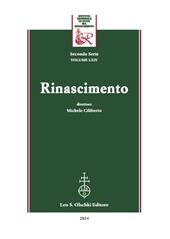«Exempla rerum in mente divina» : los Hieroglyphica de Valeriano como espejo de la interpretación neoplatónica de la realidad
P. 281-312
Following the last few decades of research, Pierio Valeriano Bolzanio's Hieroglyphica treatise has emerged as one of the most widely used symbolic sources in the creation of plastic and literary works of art, becoming particularly popular in Spanish culture in the 16th and 17th centuries. The aim of this work is to investigate the author's real intention in the ideation and composition of the text, aiming to resolve the doubts that arose around hismethodology and purpose. Did the humanist want to create an accurate hieroglyphic repertoire based on the information collected by himself, or did he succumb to the lack of reliable information, deviating towards the creation of a mere iconographic catalogue? Thanks to the translation and analysis of some valuable passages of the text, I aim to dispel any doubts about the author's actual philosophical and Neoplatonic nature, finding common ground with the Renaissance interpretation of hieroglyphs. [Publisher's text]
Fa parte di
Rinascimento : seconda serie, LXIV, 2024-
Articoli dello stesso fascicolo (disponibili singolarmente)
-
Informazioni
Codice DOI: 10.1400/299051
ISSN: 2037-6138
MATERIE


